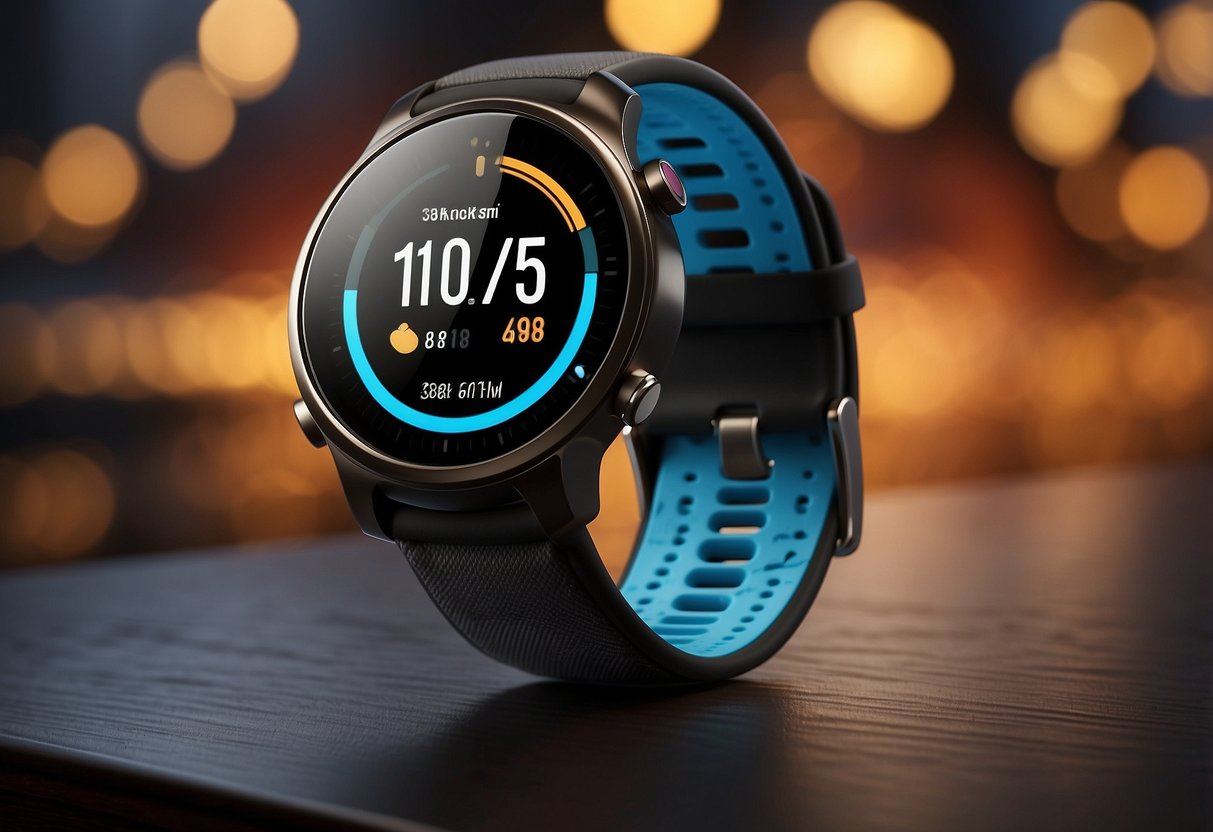
9. Withings ScanWatch
The Withings ScanWatch is a notable entry in the wearable technology market for fitness enthusiasts. It combines medical-grade ECG, heart rate monitoring, and SpO2 measurement to offer a comprehensive health-tracking experience. This smart device not only monitors vital signs but also detects sleep apnea and tracks sleep patterns.
The classic analog design is complemented by a small digital screen, providing a sleek and stylish look. Its battery life lasts up to 30 days on a single charge, minimizing the inconvenience of frequent recharging.
The ScanWatch is compatible with both iOS and Android devices. Users can sync their data seamlessly through the Withings Health Mate app. This offers detailed insights into their health metrics.
Fitness enthusiasts will appreciate the automatic activity recognition feature. It can track various activities like walking, running, and swimming without manual input.
Moreover, the device is water-resistant up to 50 meters, making it suitable for swimming and other water-based activities.
The Withings ScanWatch is designed to provide a thorough range of health and fitness tracking features in a stylish and user-friendly package.
10. Huawei Watch GT 3 Pro
The Huawei Watch GT 3 Pro is a notable addition to the wearable tech market. This smartwatch offers an array of fitness tracking features, making it popular among fitness enthusiasts.
With a sleek design, the Watch GT 3 Pro incorporates a titanium or ceramic body, depending on the model. It has a vivid, high-resolution AMOLED display that enhances visibility.
The device boasts comprehensive health monitoring tools, including heart rate tracking, SpO2 measurement, and sleep analysis. Athletes will appreciate the multi-sport tracking modes, which cover activities like swimming, cycling, and running.
It also has built-in GPS for accurate route tracking and an impressive battery life that can last up to two weeks on a single charge. The smartwatch is compatible with both Android and iOS devices, providing flexibility for users.
Huawei’s Watch GT 3 Pro aims to deliver a well-rounded fitness and health monitoring experience, packaged in a premium design.
Benefits of Wearable Technology in Fitness
Wearable technology has transformed the fitness world by enhancing real-time monitoring, boosting motivation, and enabling personalized training. These advancements improve both the efficiency and the enjoyment of workouts.
Real-Time Tracking
Real-time tracking is a principal benefit of wearable technology. Devices such as fitness trackers and smartwatches monitor key metrics like heart rate, steps taken, and calories burned. This immediate feedback helps users adjust their activity levels on the spot.
By providing continuous data, users can make informed decisions about their exercise routines. This accurate and timely information allows individuals to optimize their workouts for better results.
Wearable devices also help in identifying any anomalies or irregularities. If the heart rate unexpectedly spikes or drops, the user can react promptly. This feature can potentially prevent injuries or health issues.
Improved Motivation
Motivation is often a significant barrier to regular exercise, but wearable technology can help address this challenge. Features like goal-setting and progress tracking keep users engaged and committed to their fitness plans.
Notifications and reminders encourage users to stay active throughout the day. Many devices offer social features and community support, where users can share their achievements and challenges.
Gamification elements such as badges, challenges, and leaderboards add a fun and competitive edge. This makes fitness more exciting and less of a chore, helping maintain motivation over time.
Enhanced Personalized Training
Wearable technology allows for personalized training experiences by collecting and analyzing individual performance data. Based on the gathered information, these devices can suggest customized workout plans tailored to specific goals and fitness levels.
The more precise data enables a better understanding of what works best for each individual. Adjustments can be made in real-time to improve efficiency and effectiveness.
Personalized feedback on form and technique can also be provided. Some advanced wearables even offer virtual coaching, guiding users through exercises to maximize benefits. This customization helps users achieve their fitness goals more efficiently than generic plans.